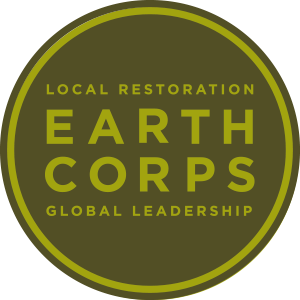Amy Cirio: Finding Community through the Rings of a Tree
Amy Cirio was a corps member at EarthCorps in 2019 and crew lead in 2020. Passionate about environmental restoration and finding community, she is on a journey to dismantle her internalized white supremacy. Today, she works in environmental education at Mid Sound Fisheries Enhancement Group.
Most folks hear about EarthCorps through a friend of a friend, a distant relative, or a random LinkedIn connection. Amy, however, is not like most folks. So how did she end up at EarthCorps? It’s all thanks to a random drawing out of a hat.
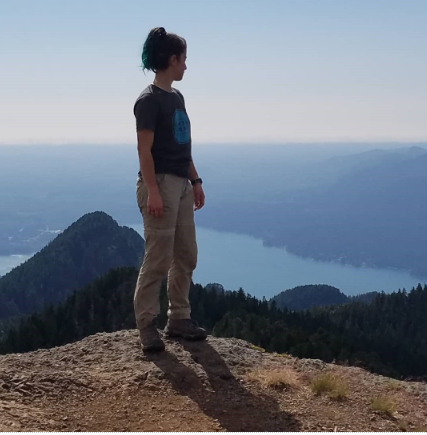
Amy’s first job was at a summer camp, where she delighted in breathing in the fresh air and adventuring through nature. Soon she began to work at the Magic House, a children’s museum in St. Louis. She also volunteered at the Shaw Nature Reserve in Gray Summit, MO and interned at the Litzsinger Road Ecology Center.
These early experiences shaped her interest in environmental studies. Before she knew it, she had a bachelor’s in biology and a career to start dreaming up.
While taking a course on writing in biology, the class all picked a random topic out of a (what turned out to be a very important) hat. Amy’s subject? The reintroduction of wolves in Yellowstone. From here, it is a chain reaction. The paper introduced her to restoration as a topic. An internship at the Litzinger Road Ecology Center led her to a passion for dendrochronology.
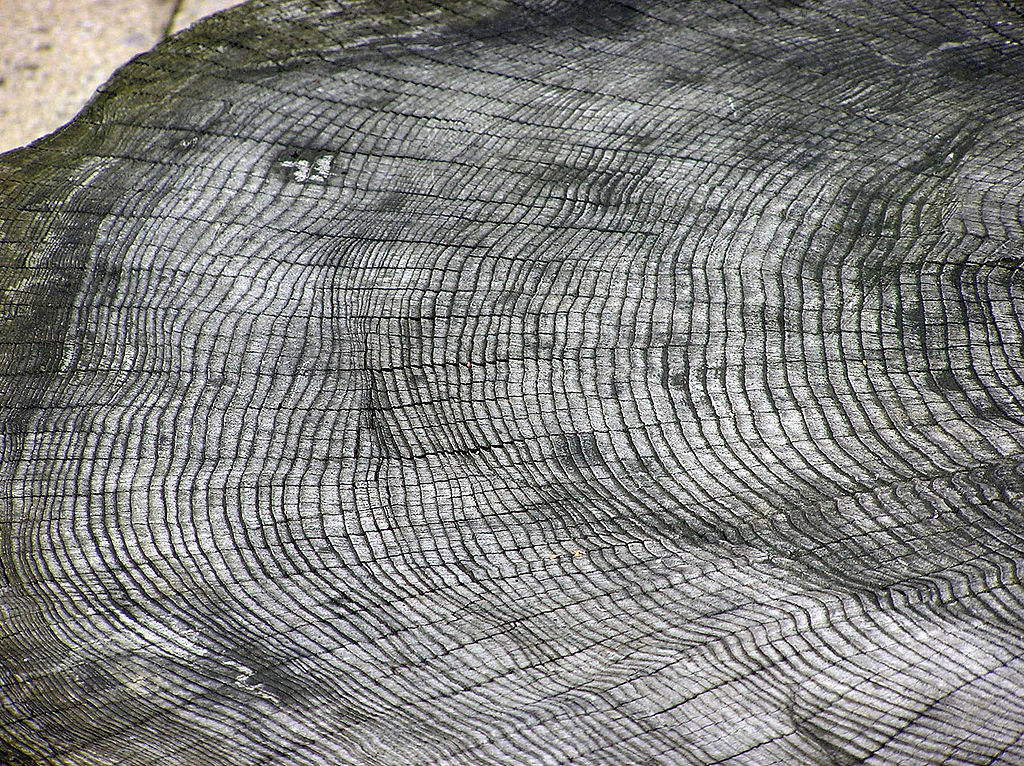

Record scratch. If you don’t know what dendrochronology is, do not worry. Amy’s got your back. She says that “it’s the study of tree rings and the information that we can glean from them. A tree can only grow as much as the most limiting factor in their environment. So, when you cut down a tree, you can look at all of the rings, right? You can count how old it is every year. As the tree matures, it has big cells while it’s growing, and where it’s transporting a lot of water. And then in the winter, when it’s dormant and it’s not growing anymore, the cells are a lot smaller and that’s how the tree rings are formed. So people do studies where they bore into trees and they get a tree core (a little straw-shaped piece of the tree) and then they can look at all of those tree rings without cutting down the tree. The tree is totally fine! And if they do that to a bunch of trees in an area, they can find out information about like the climate in that area, fires that have happened, and even archeology of wooden structures.”
“Everybody is a friend that you just don’t know yet, right?”
Are you as fascinated as us? Maybe, but probably not as fascinated as Amy was in 2018!
She began looking for schools across the country where she could study more. Western Washington University has a lab. Bingo. But how does one move across the country? A job certainly helps. Her early love of being outside made her consider trail building. Naturally, she found the Washington Trails Association website. Luckily for EarthCorps, the biography for one of the staff mentioned they were an EarthCorps alumni. Luckily for Amy, the program was exactly what she was looking for.
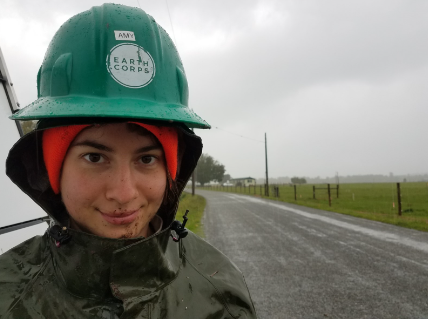
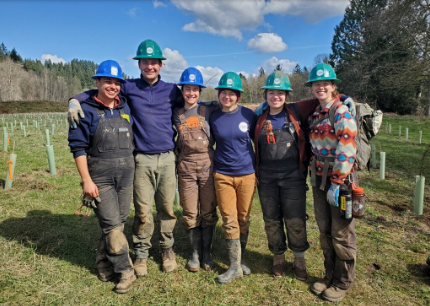
Amy looks back upon her time at EarthCorps with fondness. EarthCorps looks back upon her tenure in the program with thankfulness.
“My favorite parts about EarthCorps was the community, definitely… When I came to EarthCorps, I was just like given a community to be a part of and everyone was so welcoming and so kind… It showed me how much I needed community, how much I needed skills to be able to build relationships with people. And then the process of meeting a bunch of new people and then feeling them become my friends? That taught me a lot about the world.”
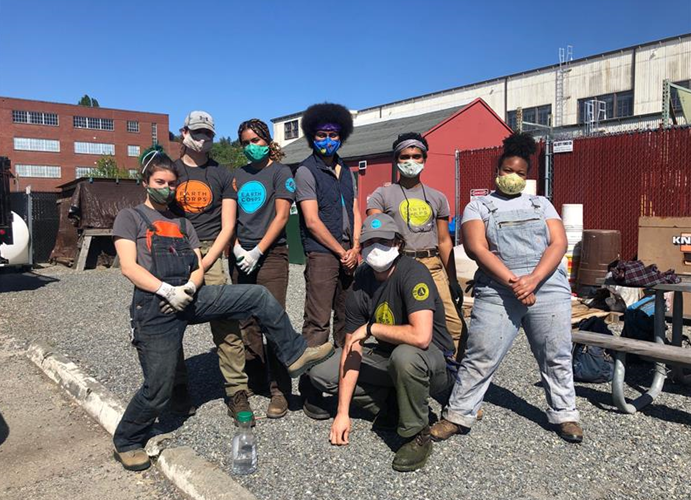
“Another thing that was really helpful was that I feel like just I got a lot of support while I was trying new things. I was a crew member, got a lot of support as a crew member, but then I was a crew leader as well and I got a lot of support there, too! That really helped with my confidence because I was so new… No one ever made me feel like I couldn’t do it. No one ever made me feel stressed about it. I just felt supported the whole time, which taught me a lot about what I’m capable of doing.” Finding community can unlock so much in a person.
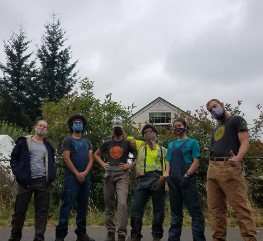
A central piece of Amy’s experience at EarthCorps was deconstructing her white supremacy. The corps had a white caucus group that was devoted to unpacking internalized racism. During her time at EarthCorps, Amy also read a personally influential work: White Supremacy Culture by Tema Okun.
While the people of color resource group met, the white caucus group met separately to discuss their personal histories, baggage, and biases. That experience kickstarted a deep, difficult, and personal education journey. Amy is grateful for how the social justice lens of the work at EarthCorps helped pave the way for her continued path toward decolonization.
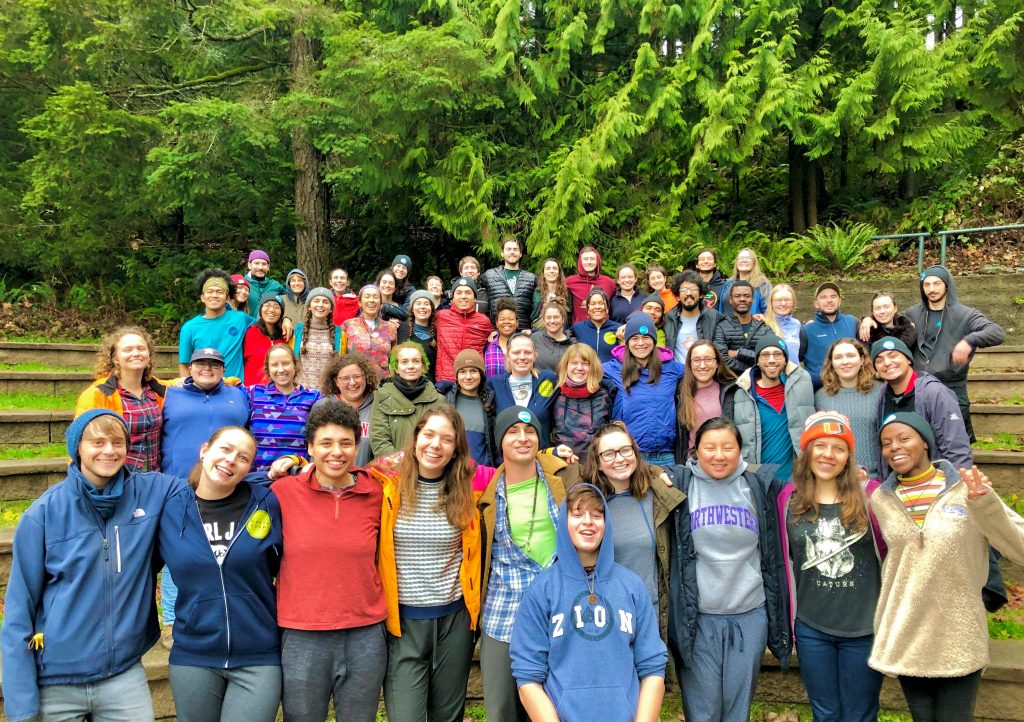
Today, Amy works for Mid Sound Fisheries Enhancement Group, which works toward salmon recovery in Central Puget Sound. Ironically, its office is also in Magnusen Park, the home of the office for EarthCorps. Post-EarthCorps, Amy also worked as an assistant crew leader for Partner In Employment where they had a youth restoration training crew for, recent immigrant and refugee youth to teach them restoration skills. She is thriving in the environmental education world.
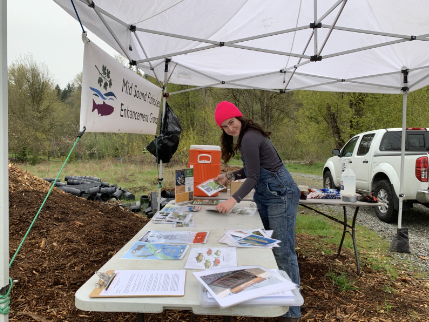
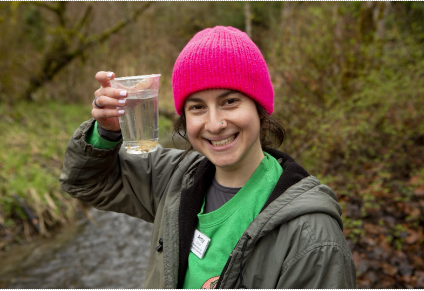
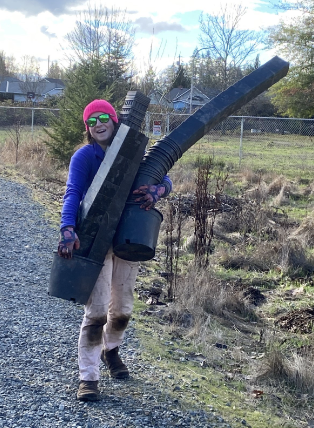
Once a summer camp counselor, she’s come full circle in a beautiful way as she introduces elementary school students to restoration by involving them in the hatching, raising, and releasing of salmon.
Learn more about her work here!
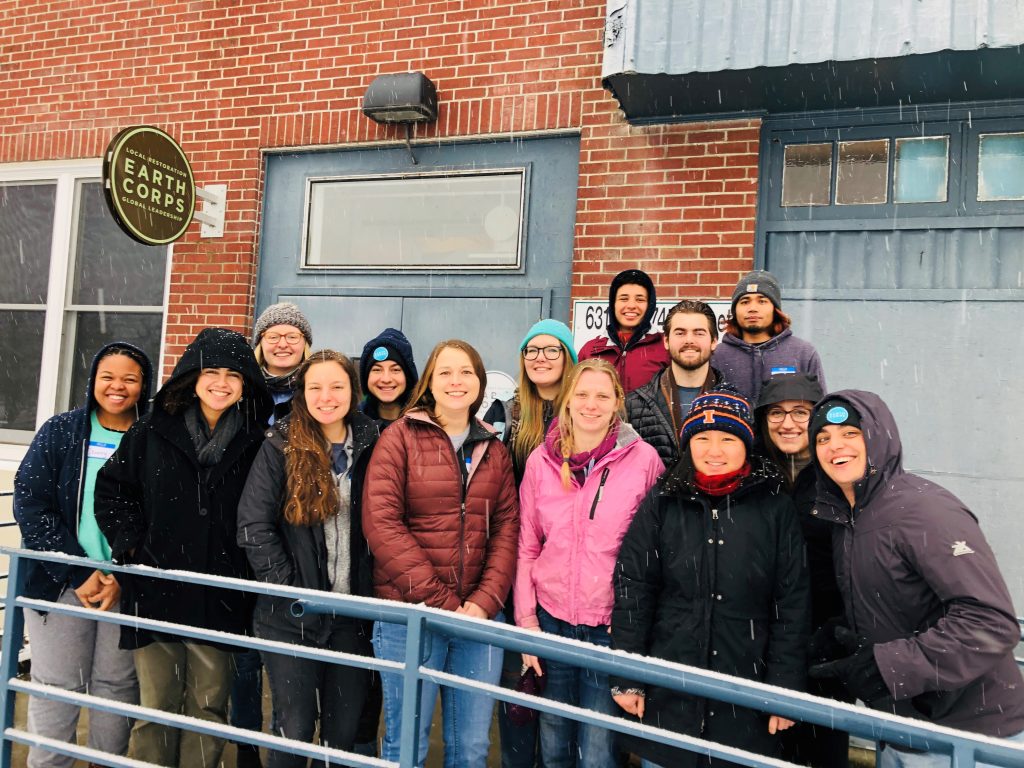
EarthCorps is actively recruiting folks to join the September 2023 cohort! EarthCorps cultivates leaders and community partnerships to advance environmental justice. Each year we bring together passionate and hardworking young adults from the United States and across the globe for an environmental leadership development and green-jobs training program where we care for the lands, waters, and people of the Puget Sound region.
